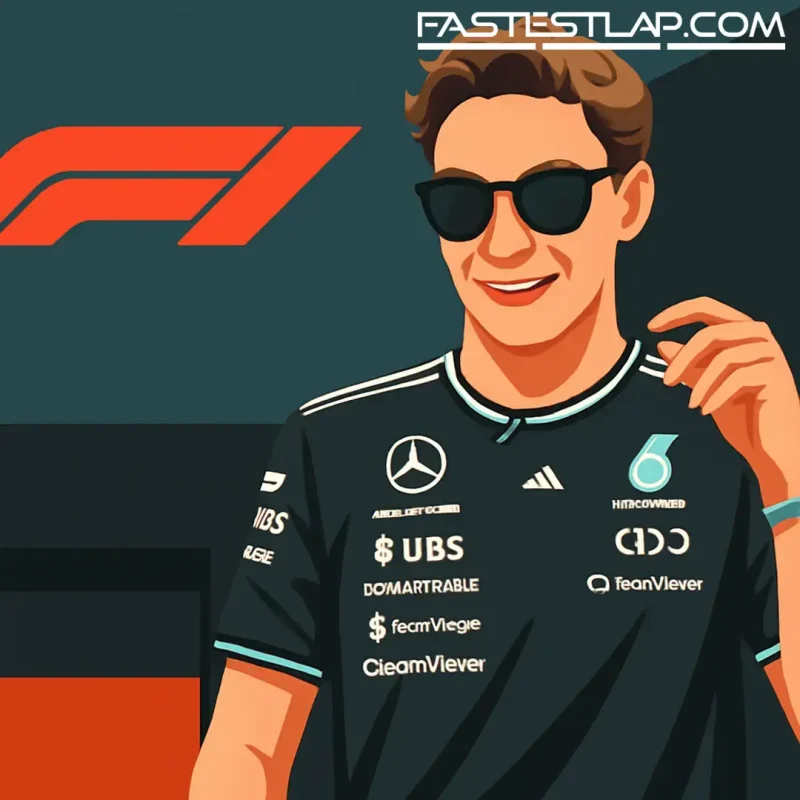George Russell had a grin and a jab ready at Monza. Asked if his Italian Grand Prix had been “tough,” the Mercedes driver quipped that he thought the question was about McLaren’s late-race switch between Lando Norris and Oscar Piastri. The smile said it all: he knew where the headlines were.
And yet, the story of Monza wasn’t the swap. It was Max Verstappen’s disappearing act.
On a weekend where Red Bull’s pace had been a coin flip throughout the year, Verstappen pocketed a surprise pole and then cleared off to win by nearly 20 seconds, his best, most emphatic afternoon since Imola. Behind him, McLaren choreographed a clean sprint to second and third after asking Piastri to hand the place back to Norris following a slow stop for the Briton that shuffled the order.
Russell finished fifth, boxed in for much of the race by Charles Leclerc’s Ferrari, with Lewis Hamilton shadowing him in sixth. It was steady, it was tidy, it was… a bit flat.
“It’s a strange season,” Russell admitted afterwards. “I don’t understand how Verstappen can be 50 seconds behind in Bahrain and Budapest and then win with such a margin here or in Imola. It’s very difficult to comprehend.”
That whiplash has become the defining riddle of 2025—form swings that make Friday read-throughs look like fiction by Sunday. Mercedes have often looked like Ferrari’s natural sparring partner, but Monza put daylight between them. Russell said the car had speed early on, but minimal wing and maximum DRS wasn’t enough to unlock Leclerc.
“P5 is the maximum we could achieve,” he said. “I’m not over the moon but it’s where the car belongs. We had our smallest rear wing but Ferrari brought an even smaller one. Our car was faster in the first stint, but if you can’t overtake, that’s how it is.”
Toto Wolff didn’t bother sugarcoating it. “One driver made everyone else look silly,” he said, a nod to the No. 1 Red Bull. “They really need to ask themselves what he’s doing differently.”
It wasn’t just a Verstappen thing, though. There was a hint of frustration directed in-house, too. Kimi Antonelli grabbed points in ninth, but Wolff felt the rookie left time and positions on the table. “Kimi made too many mistakes. He simply needs to put together a solid weekend. Then he’ll be racing on equal terms with Leclerc and George. And with George, things also weren’t completely smooth.”
That’s the rub for Mercedes: the base performance is there in flashes, yet the execution window is too narrow. On some Sundays the car looks a podium threat; on others it can’t find a way past a scarlet roadblock. With the season marching into its decisive run, they can’t keep trading places with Ferrari and calling it progress.
As for McLaren, the call to swap was predictable, blunt, and effective—the kind of thing teams used to tie themselves in knots over. No drama, no coded radio epics, just a clear message and both drivers buying in. Russell’s little dig aside, it was the right move for Woking’s points haul and a reminder that this is a sport where the cleanest systems often beat the cleverest ideas.
The bigger, more unsettling question hangs over the top step. Red Bull’s peaks are towering this year, and Verstappen’s Monza peak was Everest. When the RB slips out of its narrow operating window, it looks mortal. When it hits it, everyone else looks a class below. That’s what rattled Russell—the size of the swing, not just the size of the gap.
Mercedes can take some solace in the fundamentals. Straight-line efficiency was improved, tyre life was under control, and race management was tidy. But the scoreboard only cares how many cars you beat to the flag, not how efficiently you followed them. That’s the part Russell wants to change, jokes and all.
Monza gave us three truths in fast-forward: McLaren aren’t shy about making the call, Ferrari still own the art of being impossible to pass at home, and Verstappen, when the window’s open, slams it shut on everyone else. Mercedes? They left Italy with points and a puzzle. The tone back at Brackley this week suggests they know which one matters more.




